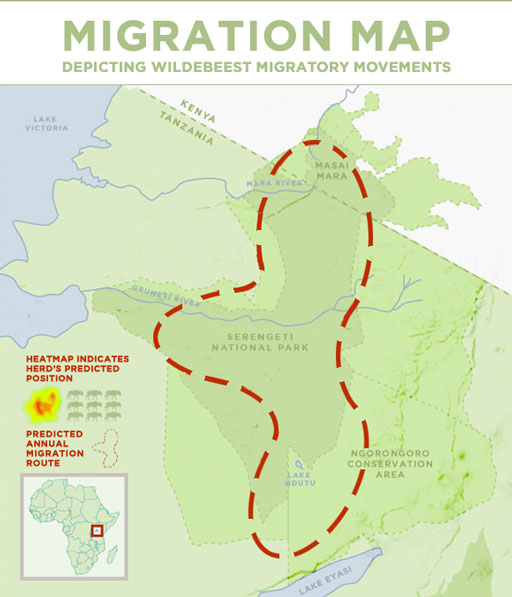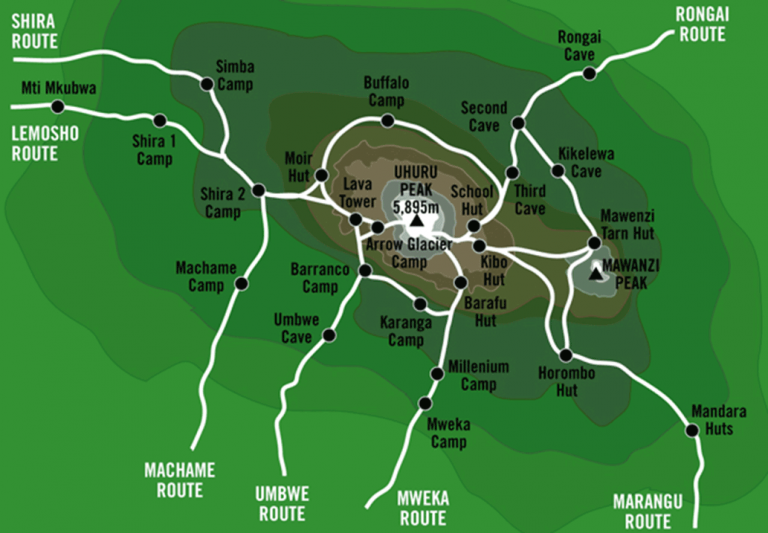Kilimanjaro climbing and your health
Acute Mountain Sickness (AMS)
Sometimes called “Altitude Sickness”, it is encountered at very high altitudes such as the summit area of Mount Kilimanjaro. AMS, once apparent it can be treated quickly, by taking the affected person to a lower altitude. Often a drop as little as 500m will be sufficient.
It is worth noting that almost ¾ of people who climb Mount Kilimanjaro suffer from AMS, whether mildly or with greater severity. A common misconception with AMS is the more fit you are, the less likely it’ll affect you. However, your fitness level, age, gender or previous climbing experience don’t seem to matter — anyone can get it. It is therefore important to understand this condition, its symptoms and take care to avoid it.
The symptoms of AMS include in the order normally experienced; headaches, nausea, anorexia, exhaustion, lassitude, rapid pulse, insomnia, swelling of the hands and feet and reduced urine output. Severe altitude sickness can lead to serious complications, including shortness of breath at rest, inability to walk, decreasing mental alertness and a build-up of fluid in the lungs which can result in a “gurgling” sound when breathing. Climbers can take precautions to at least minimize the severity of the illness, by maintaining a slow steady pace from day one, include an extra day of acclimatization at a high altitude and by drinking at least 3-4 liters of water every day. Preventative medicine is also available and you should consult your physician for specialist advice.
Hypothermia
Hypothermia is when the body’s core temperature drops significantly. Prevention is the best cause of action and it can be avoided with care. Climbers must bring the right clothing and equipment with you to avoid hypothermia. The correct equipment and clothing are critical in the prevention of Hypothermia. Do not allow your clothing to get wet from either rain or perspiration.
Treating hypothermia is not difficult and someone suffering from it should be moved to a sheltered area, all clothing removed and they should get into three sleeping bags for warmth with another person to help raise body temperature.
Sun related injuries
Even when the weather is cloudy and cold, the sun penetrates the cloud and can cause sunburn. The sun is far more powerful at great heights as less ultraviolet light is filtered and if the skin is not sufficiently protected.
It is strongly recommended to use a 20+ sun protection cream at lower altitudes, and a total block cream above an altitude of 3000m. Protect your eyes with dark glasses (choose a pair with side panels). Sunburn also dehydrates so drinking lots of water is essential. Additionally, snow blindness is another threat when climbing Mount Kilimanjaro. It is also important to wear dark sunglasses preferably with side panels above 4000m in the daytime and essential when walking through snow or ice. Snow blindness can be very painful and requires victims to bandage their eyes for at least 24 hours.
Fitness
It is not advisable to climb Mount Kilimanjaro unless you are physically fit. Any climber who suffers from any cardiac or pulmonary problems should be cautious and should not attempt to climb the mountain unless they have consulted their physician. It is strongly recommended that a physical fitness program is followed to prepare yourself physically for the mountain.
Foot problems
It’s very important to wear suitable footwear. Loose comfortable boots with good ankle support. Ill-fitting boots or boots that have not been worn in will damage feet, resulting in pain and blistering. It is it therefore also important to keep your toenails short for the climb. Attend to any blister as soon as you feel it developing. You should also make sure your toenails are cut short so they don’t rub or catch on your socks. If you develop a blister Remove the boot and cover the area with a zinc oxide tape or something similar.
Don’t carry too heavy a load. Wash your feet and change your socks regularly. During lunch, stops take off your boots and socks and let them dry in the sun.
Drink enough water
When it comes to hydration, this is yet another vital part of your Kilimanjaro trek. Make sure that you drink at least 3 – 4 liters of liquid a day – preferably water. For your first day, it is recommended that you take along freshwater and remember that disposable plastic bottles are not permitted on Kilimanjaro. Running water on the mountain is safe to drink from day-2 onwards, but care should still be taken. If you are not used to fresh water in nature, prevent any inconvenience by using water purification tablets. Climbers ensure that none of the items in their luggage are packed in plastic bags.
Go slowly
Go slowly – “Pole Pole” as they say in Swahili! This is also very important during your first days of climbing. Climbers can take precautions to at least minimize the severity of the illness, by maintaining a slow steady pace from day one. Even if you feel well, slow down and enjoy the scenery. The biggest cause of altitude sickness is ascending too high too fast! The slower you hike to more time you give your body to acclimatize at high altitude.
Contact us on how you can incorporate gorilla trekking into your itinerary.









